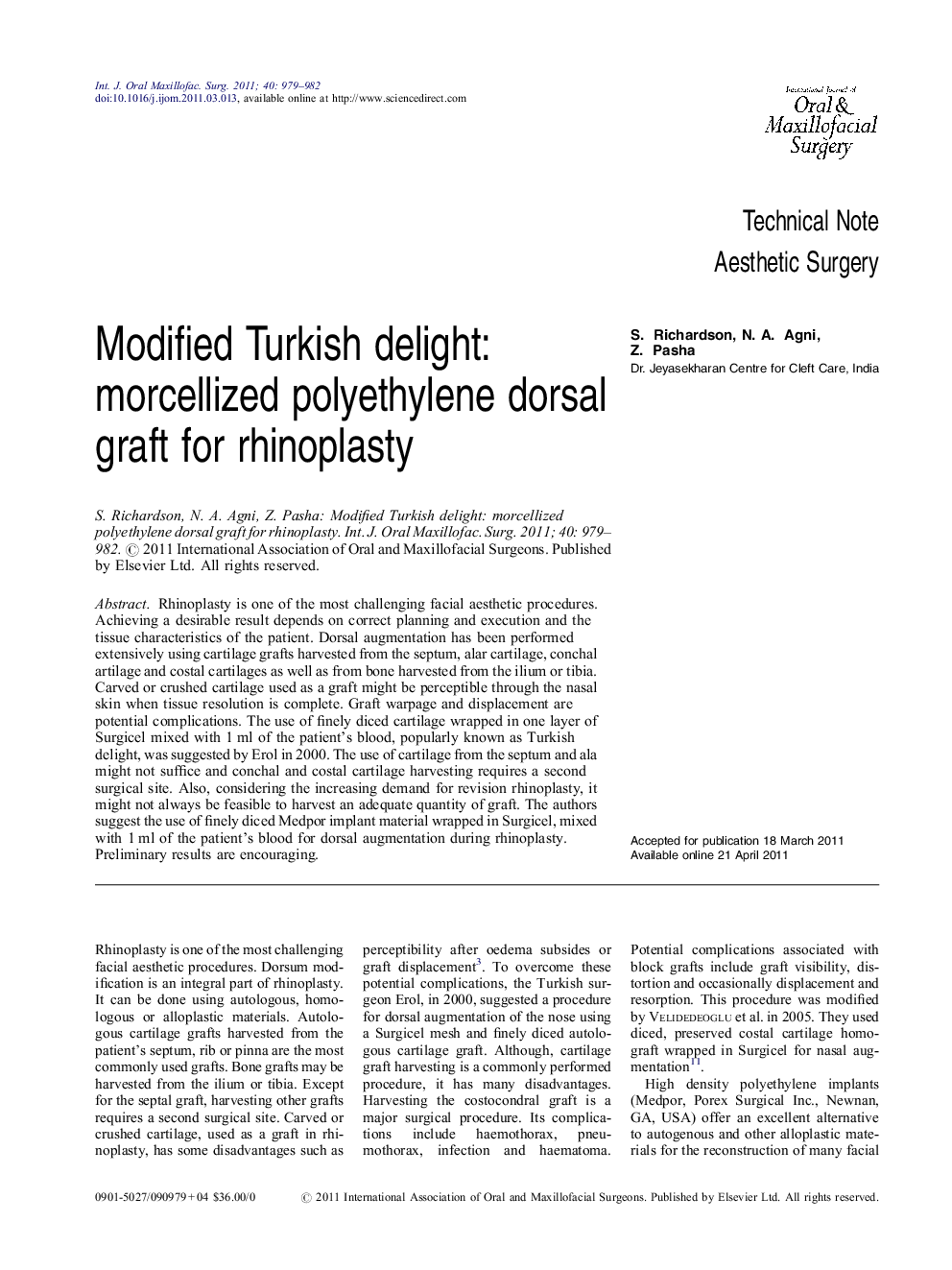| Article ID | Journal | Published Year | Pages | File Type |
|---|---|---|---|---|
| 3133797 | International Journal of Oral and Maxillofacial Surgery | 2011 | 4 Pages |
Rhinoplasty is one of the most challenging facial aesthetic procedures. Achieving a desirable result depends on correct planning and execution and the tissue characteristics of the patient. Dorsal augmentation has been performed extensively using cartilage grafts harvested from the septum, alar cartilage, conchal artilage and costal cartilages as well as from bone harvested from the ilium or tibia. Carved or crushed cartilage used as a graft might be perceptible through the nasal skin when tissue resolution is complete. Graft warpage and displacement are potential complications. The use of finely diced cartilage wrapped in one layer of Surgicel mixed with 1 ml of the patient's blood, popularly known as Turkish delight, was suggested by Erol in 2000. The use of cartilage from the septum and ala might not suffice and conchal and costal cartilage harvesting requires a second surgical site. Also, considering the increasing demand for revision rhinoplasty, it might not always be feasible to harvest an adequate quantity of graft. The authors suggest the use of finely diced Medpor implant material wrapped in Surgicel, mixed with 1 ml of the patient's blood for dorsal augmentation during rhinoplasty. Preliminary results are encouraging.
